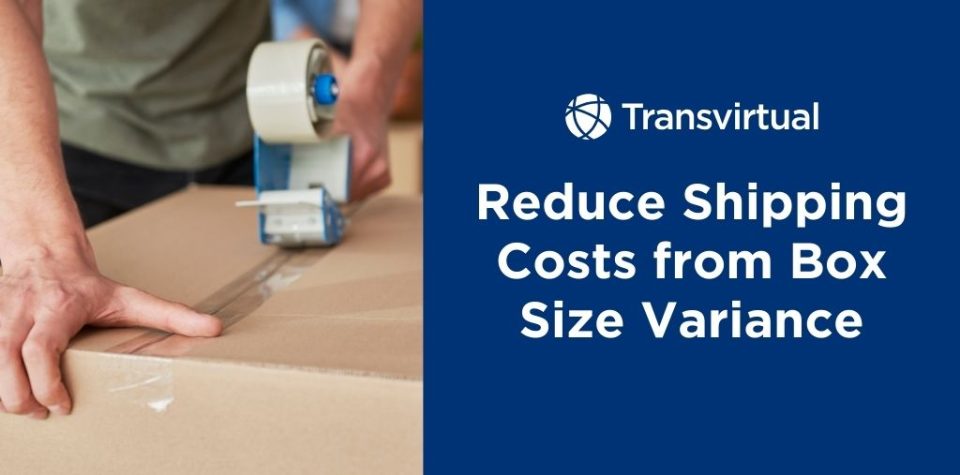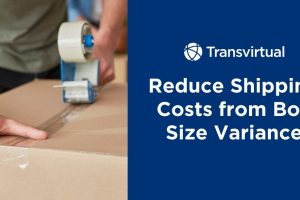Table of Contents
Up to 25% of e-commerce packages are nearly twice the size of the product they contain, creating significant inefficiencies. This not only wastes materials but also drives up shipping costs due to dimensional weight (DIM) pricing, where carriers charge based on package size rather than actual weight. While DIM pricing helps ensure carriers are fairly compensated for space usage, it penalizes businesses with inefficient packaging, leading to higher shipping expenses and reduced profitability.
This issue is known as box size variance—when the dimensions of shipping boxes don’t match the actual size of the products inside. It’s a common but often overlooked factor that contributes to unexpected surcharges.
In this article, we’ll explore how box size variance inflates shipping costs and provide actionable strategies for minimizing these hidden expenses through packaging optimization, operational improvements, and the use of smart technology.
The Challenge of Box Size Variance
Box size variance arises when packaging dimensions exceed what’s necessary for the product. While seemingly minor, this inefficiency has significant cost implications, as most shipping carriers rely on DIM weight to calculate charges.
Under DIM pricing, shippers pay based on whichever is higher: the actual weight of a package or its dimensional weight, determined using a formula that factors in length, width, and height.
Imagine you’re shipping a small, lightweight speaker. The actual weight is 2 pounds, but the box dimensions are 18 inches by 12 inches by 12 inches. Under DIM pricing, the dimensional weight is calculated based on the box size, and in this case, it would be 13 pounds. Since the dimensional weight (13 pounds) exceeds the actual weight (2 pounds), you’ll be charged for the higher dimensional weight, increasing the shipping cost
The financial impact extends beyond shipping fees to include higher warehousing costs and lower truckload efficiency. Furthermore, oversized boxes waste materials and increase carbon emissions, an area of growing concern for environmentally conscious consumers.
The Benefits of Optimizing Box Size Variance
Optimizing for box size variance offers several real-world benefits for companies, particularly in shipping and logistics. By right-sizing packaging, businesses can significantly reduce DIM (dimensional weight) charges, which are based on the size rather than the actual weight of the shipment. This helps cut unnecessary shipping costs and reduce waste associated with oversized boxes.
Additionally, packaging optimization leads to improved space efficiency, allowing for more products per shipment and lowering transportation expenses.
Gain an Environmental Edge Over Your Competition
Optimizing packaging isn’t just about cutting costs—it’s about aligning with consumer values and standing out in an increasingly eco-aware marketplace. Right-sizing your packaging and improving your shipping processes have significant environmental benefits.
Oversized boxes contribute to higher carbon emissions and increased landfill waste, which can damage your brand’s reputation. By adopting eco-friendly packaging solutions, you not only reduce waste but also enhance your brand’s image as a sustainability-conscious business.
Highlighting these efforts in your marketing can strengthen customer loyalty, as studies show that many consumers actively choose brands that demonstrate a commitment to environmental responsibility.
Smart Strategies to Start Lowering Your Costs Now
1. Optimize Packaging
Right-sizing packaging is one of the most effective ways to reduce DIM-related charges. This approach involves designing boxes to fit products snugly, minimizing void space while protecting the contents. Automated packaging systems, which tailor boxes to precise dimensions in real-time, have become increasingly popular among logistics-savvy businesses.
By reducing box size, companies can lower DIM fees, reduce material waste, and improve overall shipping efficiency.
2. Use Data to Inform Decisions
Shipping data holds valuable insights into how packaging dimensions affect costs. Businesses should audit carrier invoices regularly to identify unexpected DIM-related charges and patterns that may signal inefficiencies.
These audits also provide leverage for negotiating better rates with carriers, especially when paired with a commitment to optimizing packaging practices.
3. Streamline Carrier Relationships
Strong partnerships with carriers can unlock cost-saving opportunities. Collaborate with your shipping providers to establish clear packaging standards that minimize variance-related surcharges. Additionally, businesses with higher shipping volumes may qualify for discounts or special programs that lower DIM fees.
Streamline Your Shipping Process with Technology
Modern logistics challenges require modern solutions. Delivery management software (DMS) and transportation management systems (TMS) are invaluable tools for addressing the root causes of unexpected shipping costs. These platforms integrate with carriers and streamline the entire shipping process, offering benefits such as:
- Automated Cost Calculations: Prevent errors by accurately calculating DIM weight during order fulfillment.
- Packaging Recommendations: Identify cost-effective box sizes for each shipment, minimizing both DIM charges and material use.
- Real-Time Analytics: Provide actionable insights into how packaging dimensions impact costs, enabling better decision-making over time.
- Enhanced Labeling Accuracy: Generate shipping labels that comply with carrier requirements, reducing disputes and rework.
For businesses managing high volumes of shipments, machine learning features in these systems can analyze historical shipping data to recommend strategies for reducing costs further. These include suggesting optimal carrier routes or identifying opportunities for freight consolidation.
Unlock Costs Savings By Eliminating Box Size Variance
To tackle unexpected shipping costs caused by box size variance, businesses must rethink their packaging strategies. By optimizing box sizes and utilizing smarter shipping solutions, you can cut down on unnecessary dimensional weight charges. Taking advantage of technology, such as automated packaging systems and delivery management software, can streamline this process, reducing waste and lowering costs.
In today’s competitive market, addressing packaging inefficiencies isn’t just an opportunity—it’s a necessity to maintain profitability and improve customer satisfaction.
Empower your businesses to tackle shipping inefficiencies head-on. See what you can do with Transvirtual.


